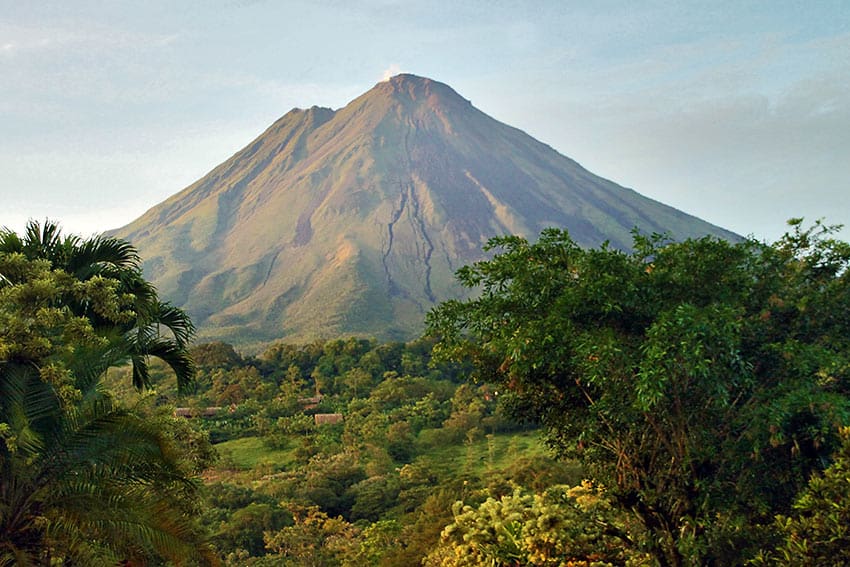I’ve been reveling in the warmth of my recent trip to Costa Rica, and not just because of the heat and humidity. This alluring Central American nation of five million Ticos, roughly the size of West Virginia, consists of just 0.03% of the earth’s landmass but is home to 5% of its biodiversity.
My checklist included hiking misty rain and cloud forests, strolling pristine beaches, witnessing an active volcano, touring a coffee plantation, and experiencing unique plants and wildlife – which included my first encounters with a viper and boa constrictor. Yes, there were some bad dreams that night.
Because Costa Rica is located between 8 and 12 degrees north of the Equator, the climate is tropical year-round. However, the country has many microclimates depending on elevation, rainfall, topography and by the geography of each particular region.
Costa Rica has a bounty of 230 mammal species, 890 bird species, 220 reptile species, 35,000 insect species and 9,000 plant species. Nearly half the nation consists of national parks and nature and wildlife reserves.

The best time to go to national parks is in the early morning. A guide is typically necessary to point out important sightings. Upon preparation for your Costa Rican journey, you will undoubtedly see numerous guidebooks with colorful photos of wildlife. You will be lucky if you manage to see a few; the rainforests and cloud forests are not a zoo, and the animals are on their own timetable.
For example, the only time I actually spotted a toucan was outside my cabin in the midst of my own private tropical rain forest, right under the Arenal Volcano. The primary colors of the toucan’s feathers, along with its yellowish orange beak, were so mesmerizing that it almost looked like a painting by Paul Gauguin.
As did the active 5,357-foot volcano, which was in view every time I looked out my window. In 1968, Arenal Volcano violently erupted, burying almost six square miles under rocks, lava and ash, killing 87 people and destroying three small villages. Smaller eruptions continued through 1998.

A specialist from the Costa Rica Volcanic and Seismic Observatory explained that eruptions are nothing unusual for the volcano, though activity has decreased in recent years. As a precaution, authorities declare a red alert, close nearby roads and evacuate people from the immediate area if they anticipate an eruption.
For the complete celestial experience you can relax in one of Arenal’s many natural hot springs surrounding the volcano’s base. At night, it’s just you and the stars above.

But, above all, it was the gentle charm and hospitality of the Ticos themselves which affected me the most. They seem to have graciousness in their DNA.
Costa Rica has literacy and life expectancy rates higher than the US, and no standing army. The former military budget is dedicated to providing health care services and education.
This has resulted in a nationwide cultural phenomenon where many Ticos are uncomfortable with any form of personal aggression or confrontation. The motto “pura vida” is an expression used in various contexts, reflecting a philosophy of a simple life, free of stress but full of a positive, relaxed feeling.
It can be used as everything from “hello” or “awesome” to “all is well?” Some examples of friendliness: I vividly recall a woman running over to assist my photographer who was struggling with changing her shoes on the beach.
Asking for directions always ended in a handshake and wait staff employees at sodas were happy to share their personal narrative when ordering a meal.
— A Seattle native, Ed Boitano has devoted 30-years of his life to writing about travel.
Read Part 2 here

